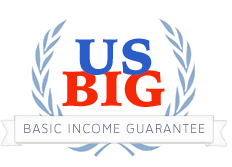A Deeper Dive into “Work” (Really “Labor Supply”) and UBI

A Deeper Dive into “Work” (Really “Labor Supply”) and UBI
Michael A. Lewis
Professor, Silberman School of Social Work at Hunter College
and the CUNY Graduate Center
In my previous piece “Why Not a UBI?” I said that one of the main objections to a UBI is that it “would discourage work.” In this piece, I will go into why, from the perspective of mainstream economic theory, there might be something to this idea.
What I’m calling “mainstream economic theory” is sometimes called “orthodox economic theory” or “neoclassical economic theory.” There are several schools of economic thought which are extremely critical of some of the assumptions on which mainstream economic theory is based. These include Marxist economics, some areas of feminist economics, old institutionalist economics, and several others. I’m very sympathetic to some of the criticisms unorthodox schools of economic thought have leveled at the mainstream. Yet I focus, in this piece, on what mainstream economists have to say about “work” and UBI. Why?
The reason has to do with the role mainstream economics plays in discussions about the relationship between certain types of public policies and “work.” For better or for worse, when the subject of policies which provide people with money they don’t have to “work” for comes up, mainstream economists’ labor-leisure choice model follows closely behind. You may not actually hear the term “labor-leisure choice model” uttered in such discussions. But if you listen carefully, that model, even if a somewhat distorted, less technical version of it, rears its head. What I’ll do in this piece is discuss the labor-leisure choice model, along with what it has to say about the possible relationship between “work” and UBI. Also, from now on, when I use the words “economics” or “economists,” I’ll mean mainstream economics or economists.
You’ll notice that, so far, when I’ve referred to the word “work,” I’ve enclosed it within quotation marks. That’s because when people use that word in the context of discussions of UBI, they have in mind what economists would refer to as “labor” or “labor supply.” Economists typically distinguish “labor” from something they call “leisure.”
Labor is what people do when they spend time working in return for a wage or salary. Leisure is what people do when they spend time doing anything else. The word “leisure” probably connotes things like hanging out at the beach with friends, partying with roommates, traveling (during non-pandemic times) for fun around Europe or Africa, etc. As long as they’re not being paid to do such things, all these activities would fall under economists’ concept of “leisure.” But so would unpaid care work for a sick friend or relative, changing your kid’s soiled diapers, struggling to breathe on a ventilator while suffering from Covid 19, etc. I’ve changed my kid’s soiled diapers, although not recently; it didn’t seem that leisurely. So, as I talk in this piece about the labor-leisure choice model, I’m going to use a more accurate label and call it the “wage-nonwage time choice model.”
Economists focus on how people make decisions. One of the key decisions people make, though of course, due to unemployment, it isn’t completely up to them, is how much wage time to spend. That is, they decide how much labor to sell. Any amount of time they spend selling labor is time they can’t spend doing things they don’t get paid for. In other words, the cost of wage time, is the loss of time spent doing things they could be doing if they weren’t “working.”
On the other hand, if people spend time doing things they aren’t being paid to do, that’s time they can’t spend selling their labor. So, the cost of nonwage time is the loss of goods and services they could’ve bought had they spent that time selling their labor.
This trade-off between wage and nonwage time is at the heart of the wage-nonwage time choice model. That model represents people as having a “budget” of 24 hours per day. They get to decide how much of that budget to allocate to selling their labor and how much to allocate to doing other things. The number of hours they allocate to selling labor depends on their preferences regarding the things they could buy with their earnings versus the things they could do if they spent less time “in the office,” “on the assembly line,” etc.
As I alluded to earlier, whether people get to sell their labor isn’t completely up to them. They have to be hired by someone, and there’s no guarantee that that will happen. But economists typically exclude this complication from the wage-nonwage time choice model. Following them, I’ll do so as well. But the degree to which models are useful depends on how realistic the assumptions are on which they’re based. I’ll leave it to readers to decide whether exclusion of the possibility of unemployment renders the wage-nonwage time choice model less useful than it could be. How does all this relate to UBI? It does so in two ways: one having to do with the UBI itself, the other having to do with how it might be funded.
A UBI would provide a certain amount of money per time period (per year, per month, per whatever). But whatever that period ended up being, we could frame it as an amount of money per day or per 24-hour period. For example, let’s take Andrew Yang’s $12,000 per year UBI. That comes out to about $33 per day. In order to consider how this might affect labor supply, I first need to define economists’ concept of a “normal good.”
A “normal good” is one people buy more of subsequent to an increase in their incomes. For example, if, after an increase in their incomes, people bought more steaks, steak would be a normal good. If we managed to get Yang’s Freedom Dividend enacted, people who have an extra $33 per day they wouldn’t have to work for; that is, their daily incomes would increase by $33. If nonwage time is a normal good, we’d expect them to “buy” more nonwage time, which also means supply less labor. This is economic theory’s version of the “UBI would discourage work” claim. Anyone who makes that claim, is implicitly assuming that nonwage time is a normal good.
Let me turn now to how a possible means of funding a UBI is related to the wage-nonwage time choice model. A common, but hardly the only, proposal for funding a UBI is the personal income tax. Because most of us depend on having a job to meet our wants and needs, a personal income tax is largely a wage or salary tax.
Suppose, in order to fund a UBI, we increased marginal personal income tax rates. By “marginal personal income tax rate,” I mean the increased amount in taxes owed for a one dollar increase in earnings. For example, if my salary goes up by one dollar and, as a result, my tax bill goes up buy 30 cents, I’d face a .30 or 30% marginal tax rate. According to the wage-nonwage time choice model, an increase in marginal tax rates could decrease labor supply; such an increase also could increase labor supply.
Why might a higher marginal tax rate decrease labor supply? A higher rate would mean an increase in the amount owed in taxes and a decrease in take home pay. That is, for the same amount of labor supplied, the payoff to that amount of labor would be lower after the tax increase than it was before. Looking at this from the perspective of nonwage time, a higher marginal tax rate means the “cost” of nonwage time has decreased. This is because by consuming an hour of nonwage time, you give up less in loss income than you did before the tax increase. If the cost of nonwage time has decreased and if, as economists often assume, a decrease in the cost of something means an increase in the consumption of it, we should predict that an increase in the marginal tax rate will lead to a decrease in labor supply. This is another part of economic theory’s version of the “UBI would discourage work” claim.
Why might a higher marginal tax rate increase labor supply? If people have gotten used to a certain lifestyle and prefer to maintain it, a lower take home pay would mean they’d have to “work” more in order to do so. So, subsequent to a marginal tax rate increase, many might end up selling more labor than before.
The limitation of the wage-nonwage time choice model is it doesn’t tell us which of these opposing responses will be the dominant one. As you come across people saying that a “UBI will discourage work,” this is something you ought to keep in mind.
This piece is getting long, so I want to start winding things down by raising a question about the application of the wage-nonwage time choice model to predicting the impact of a UBI on labor supply. That model implicitly assumes that the only reason people sell labor is to make money. But many folks claim that people “work” for reasons other than to make money. They may do so out of a desire to spend time with friends and colleagues, to feel they’re making a contribution to society, to avoid being called a “lazy, no good loafer,” because of a psychological or emotional need to feel “productive,” or a host of other reasons having nothing to do with how much money they make. Suppose this claim is true. How does it relate to the wage-nonwage time choice model?
In a nutshell, these non-monetary reasons for selling labor should temper, at least somewhat, the tendency for a UBI to decrease labor supply. If people sell labor to meet an emotional need to feel productive, a $33 per day UBI might not be big enough to have much impact on labor supply. Depending on its size, the same might be true of a higher marginal tax rate.
As I said earlier, one of the main criticisms of UBI is that it “would discourage work.” Viewing this claim from the perspective of the wage-nonwage time choice model, it should be clear that things are way more complicated than that. That is, it should be clear that this claim ought, at least, to be qualified. This is something to keep in mind as we hear pundits, Tweeters, and others debate the effect of UBI on “work.”



Good post, Professor Lewis! We should question how work is defined and whether we can predict the effects of a basic income on labor supply decisions. We should also ask those concerned with those effects whether they know what the labor supply should be.